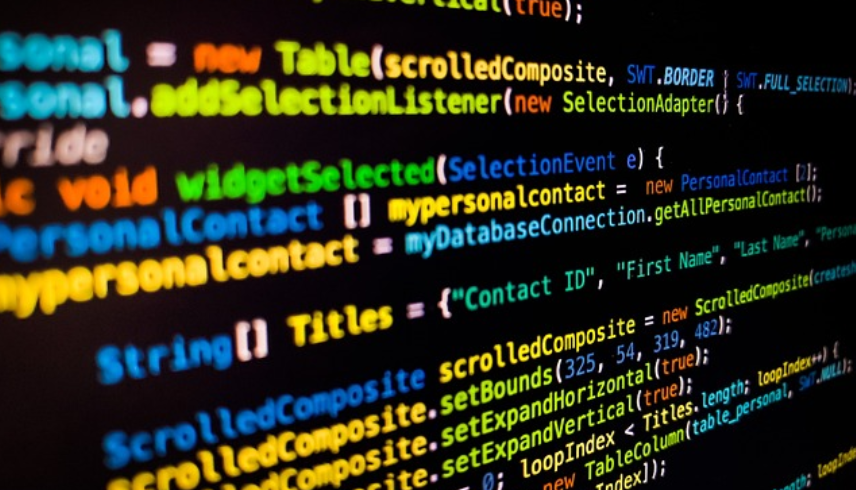Software
How to Code Without Plagiarizing

When programming and coding, maintaining integrity and originality in your work is critical. As aspiring or seasoned developers, it’s crucial to understand the importance of coding without plagiarizing. Plagiarism in coding refers to the act of using someone else’s code or ideas without proper attribution or permission. This violates ethical standards and undermines the integrity of your work. Here are some actionable strategies and best practices to help you code without plagiarizing, ensuring that your code is original, ethical, and reflects your skills and expertise as a developer.
1. Understand the Importance of Originality
The first step in coding without plagiarizing is to understand the importance of originality in the programming world. Original code demonstrates your creativity, problem-solving skills, and understanding of programming concepts. It also builds your reputation as a trustworthy and skilled developer within the coding community and among potential employers. By writing original code, you not only adhere to ethical standards but also showcase your ability to tackle challenges independently and contribute unique solutions to projects. Plagiarizing code undermines your credibility and hinders your personal and professional growth as a developer. Understanding the importance of originality in coding fosters a culture of respect for intellectual property rights within the programming community. Just as you would expect others to respect your work and ideas, it’s essential to uphold the same standards when using code created by others.
2. Learn Proper Code Attribution
Proper code attribution is essential for avoiding plagiarism and giving credit where it’s due. When using code snippets, libraries, or algorithms created by others, it’s crucial to provide clear and accurate attribution to the original author or source. This includes documenting the source of the code in your comments or documentation, acknowledging the author’s contribution in your project documentation or README file, and adhering to any licensing requirements associated with the code. Additionally, if you modify or adapt existing code, clearly indicate the changes you’ve made and provide attribution to the original source. When collaborating with other developers or contributing to open-source projects, communicate openly and transparently about the code you’re using and ensure that proper attribution is given to all contributors.
3. Utilize Version Control Systems
Version control systems, such as Git, are invaluable tools for managing and tracking changes to your codebase while also facilitating collaboration with other developers. By utilizing version control systems, you can maintain a detailed history of your code changes, track contributions from multiple developers, and revert to previous versions if needed. This helps safeguard against accidental plagiarism and provides transparency and accountability in your coding process. Version control systems enable you to create branches for experimental features or bug fixes, allowing you to work on new code without affecting the main codebase. This promotes a structured and organized approach to coding, reducing the risk of inadvertently plagiarizing existing code or introducing errors into the main codebase.
4. Practice Proper Code Documentation
Proper code documentation is essential for ensuring transparency, readability, and maintainability in your codebase while also avoiding plagiarism. When writing code, strive to create clear and comprehensive comments and documentation that explain the purpose, functionality, and usage of each code segment. This includes documenting the input and output parameters, expected behavior, and any potential edge cases or limitations of the code. When documenting your code, avoid copying and pasting code from external sources without proper attribution or understanding. Instead, paraphrase or summarize the code in your own words and provide clear references to the original source. Additionally, when referencing external documentation or resources in your code comments, provide hyperlinks or citations to direct readers to the original source for further information. By practicing proper code documentation, you not only enhance the readability and maintainability of your codebase but also demonstrate integrity and transparency in your coding process.
5. Embrace Plagiarism Checkers
Plagiarism checkers are valuable tools for detecting and preventing plagiarism in your codebase. These tools analyze your code against a database of existing code repositories, libraries, and open-source projects to identify any similarities or matches that may indicate plagiarism. With a reliable code plagiarism checker, you can proactively identify and address any instances of unintentional plagiarism in your code, ensuring that your work is original and ethical. Plagiarism checkers provide valuable insights into the integrity of your codebase and help you identify areas for improvement or optimization. By regularly running your code through plagiarism checkers during the development process, you can maintain the integrity and originality of your codebase while also enhancing your coding skills and knowledge.
Coding without plagiarizing is essential for maintaining integrity, credibility, and professionalism in programming. By understanding the importance of originality, learning proper code attribution, utilizing version control systems, practicing proper code documentation, and embracing plagiarism checkers, you can code with confidence. Adopting these tips ensures that your work reflects your skills and expertise as a developer. Coding without plagiarizing not only upholds ethical standards but also fosters a culture of respect, collaboration, and innovation within the coding community. With the right strategies and practices in place, you can code without plagiarizing and contribute to a thriving and ethical programming environment.
-
Blog1 year ago
MyCSULB: Login to CSULB Student and Employee Portal – MyCSULB 2023
-
Android App3 years ago
Cqatest App What is It
-
Android1 year ago
What Is content://com.android.browser.home/ All About in 2023? Set Up content com android browser home
-
Software2 years ago
A Guide For Better Cybersecurity & Data Protection For Your Devices
-
Latest News2 years ago
Soap2day Similar Sites And Alternatives To Watch Free Movies
-
Android2 years ago
What is OMACP And How To Remove It? Easy Guide OMACP 2022
-
Android3 years ago
What is org.codeaurora.snapcam?
-
Business2 years ago
Know Your Business (KYB) Process – Critical Component For Partnerships





















